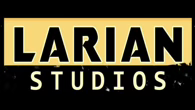Emotioneering Techniques –
The Solution to Why Writers Struggle
Most writers' work is lackluster because the techniques that evoke emotions work on the subconscious. To writers, they're invisible.
Over the last two and a half decades, David Freeman has created, unearthed, distilled and codified 1500+ Emotioneering Techniques, a vast emotional story science. (Often Emotioneering Techniques are simply referred to as “Emotioneering.”)
Emotioneering Techniques, addressed to the subconscious, are the reason an audience member or a reader gets sucked into a story. They make characters and stories emotionally gripping and unforgettable.
Emotioneering Techniques enhance screenwriting, fiction writing, game writing, AI-assisted writing, and all types of storytelling.

(Emotioneering)
Fox and Disney Hired David to Teach Emotioneering
20th Century Fox hired David as an Executive Vice President in 2016, asking him to set up a program to teach Emotioneering Techniques to their content executives and writers. When Disney bought Fox in 2019, David continued his work teaching Emotioneering, leaving in 2020 having served four years.

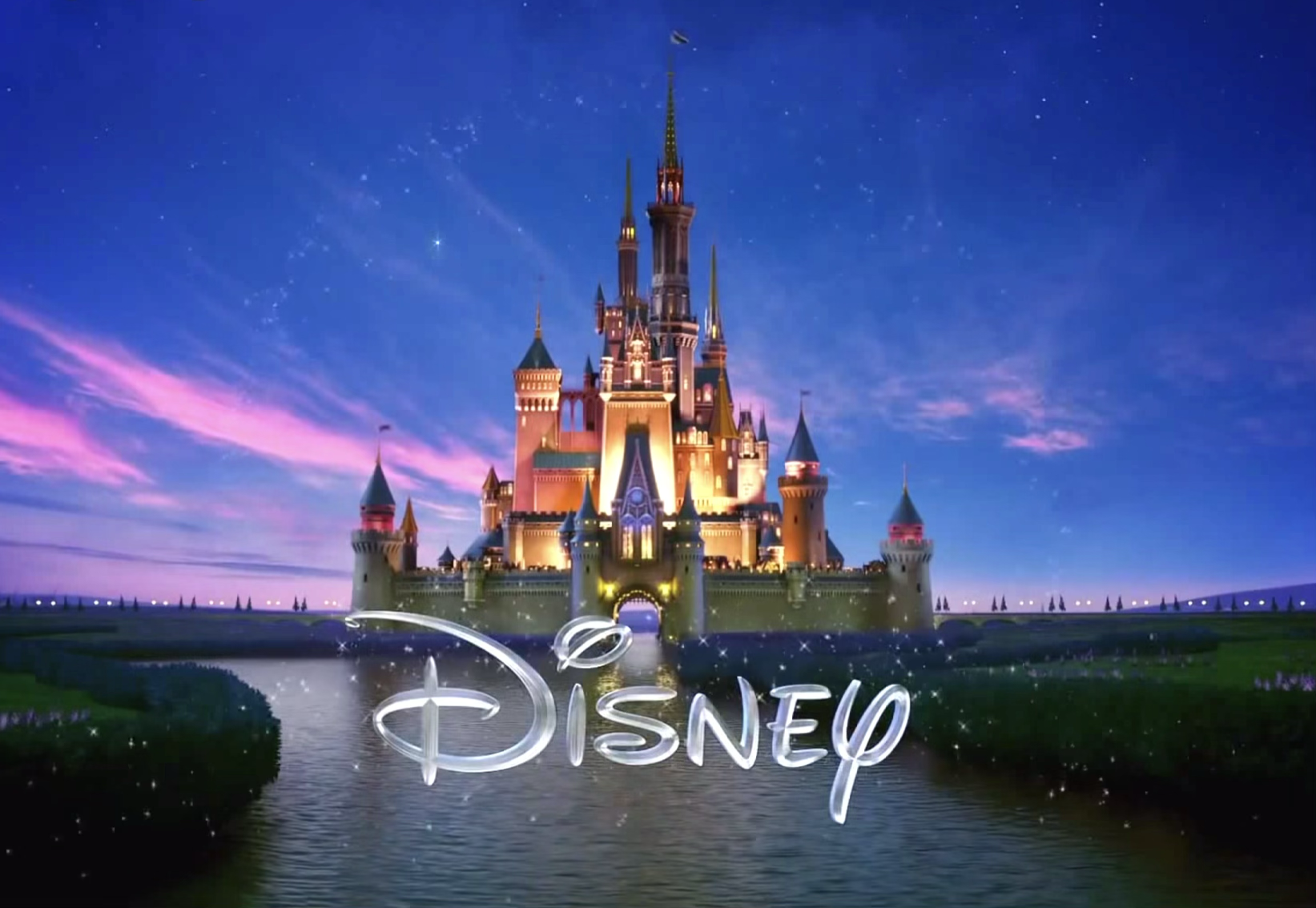

Types of Emotioneering Techniques
Emotioneering Techniques are grouped into 54 categories — most of which have numerous subcategories — including character, scene, and story techniques such as:
Those are just 7 of the 54 categories. And, as mentioned, within those categories are numerous subcategories, and within those over 1500 distinct techniques.
For instance, when it comes to “defense mechanisms,” there are 9 primary subcategories and within them the 151 separate techniques mentioned above.
The Origin of the Word “Emotioneering™”
David first started using the term Emotioneering in the book, “Creating Emotion in Games,” which he wrote in 2002 and which was published in 2003 by New Riders, an imprint of Pearson, America's largest publisher.
It was release at a time when people thought the only emotions a game player could experience was frustration when defeated and elation after a hard-won victory.
David's book hit the game industry like a cannon ball and helped transform the industry. His book presented over 300 Emotioneering Techniques, in 32 categories, which could make gameplay emotionally engaging.
It was endorsed by some of the biggest game designers of that era, including Will Wright, creator of “The Sims,” who wrote the forward, and Mike Morhaime, co-founder and President of Blizzard, the makers of “World of Warcraft.”
Here's the book and the first mentions of Emotioneering Techniques, which are the entire focus of the book.
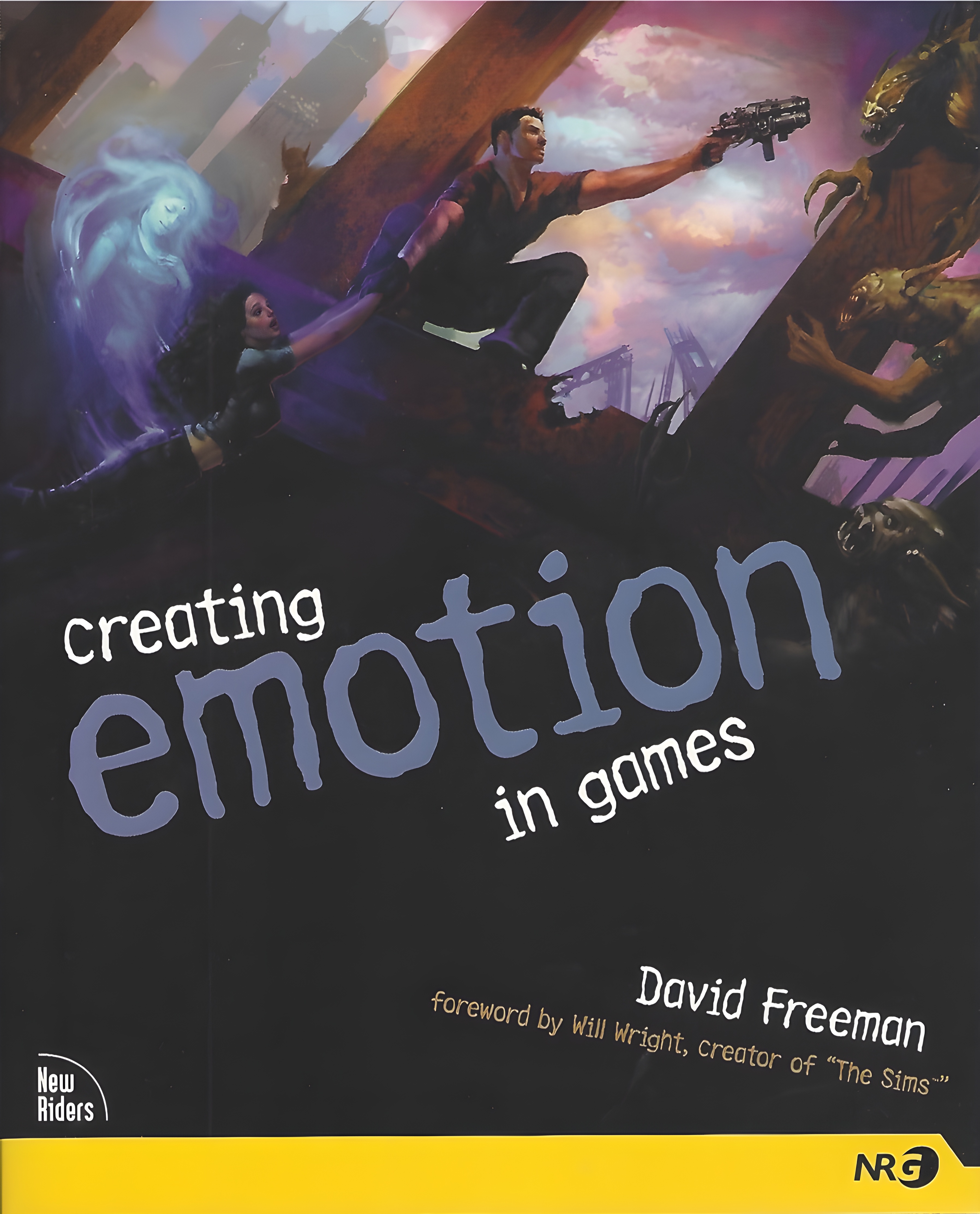
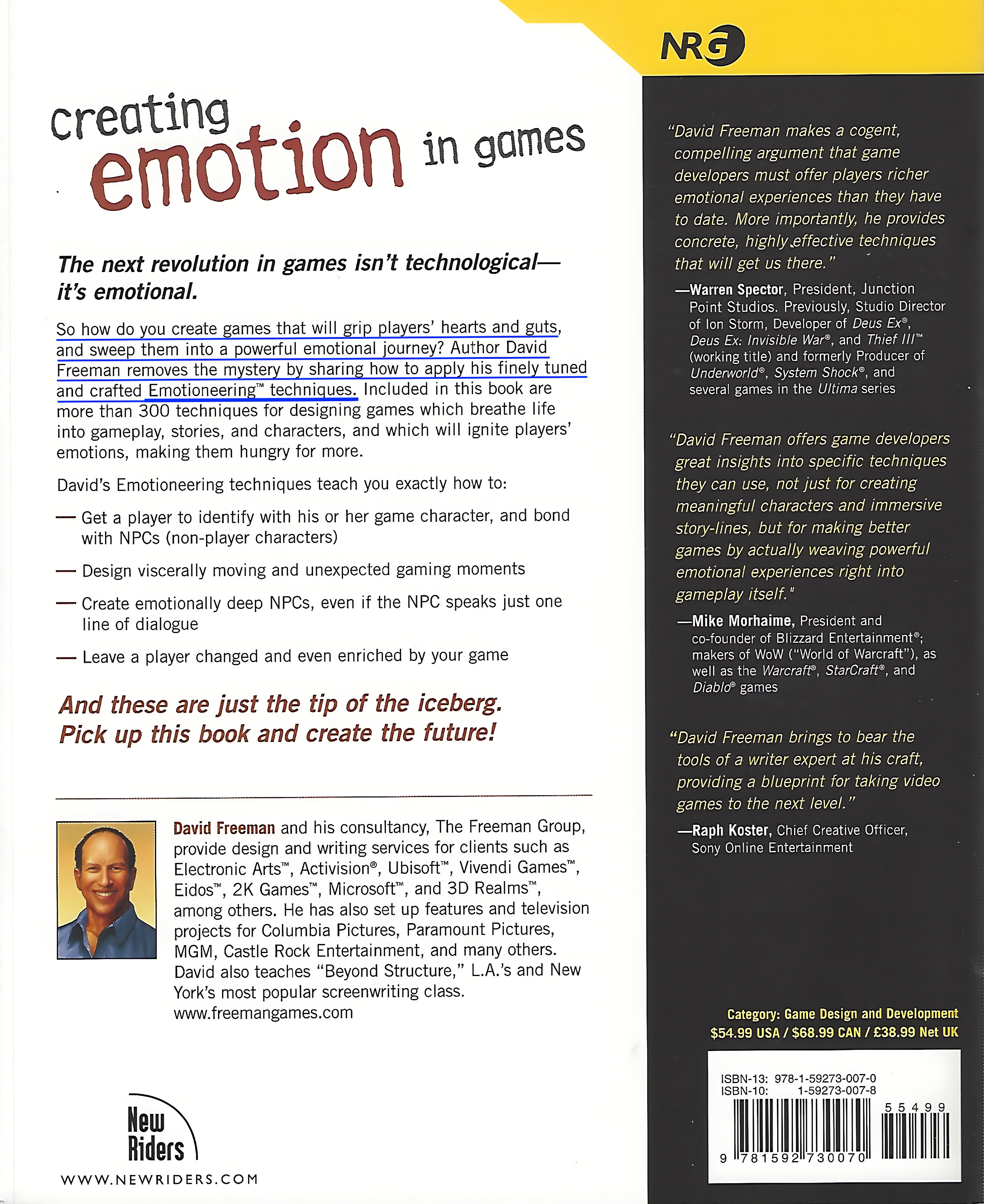
Close-up of the back cover:
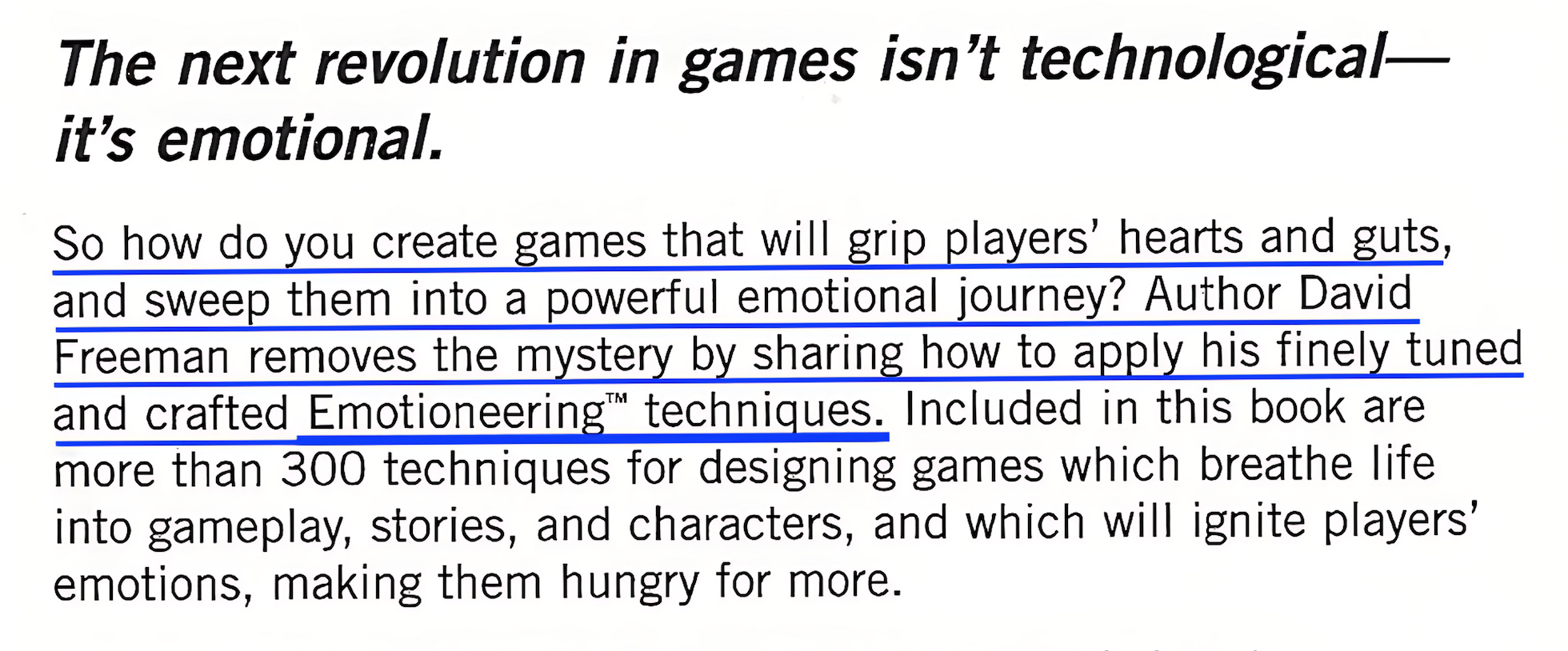
The inside cover unfolds, and we see the game scene depicted on the front cover. David deconstructs 9 different Emotioneering Techniques that are being used in a single moment of gameplay.
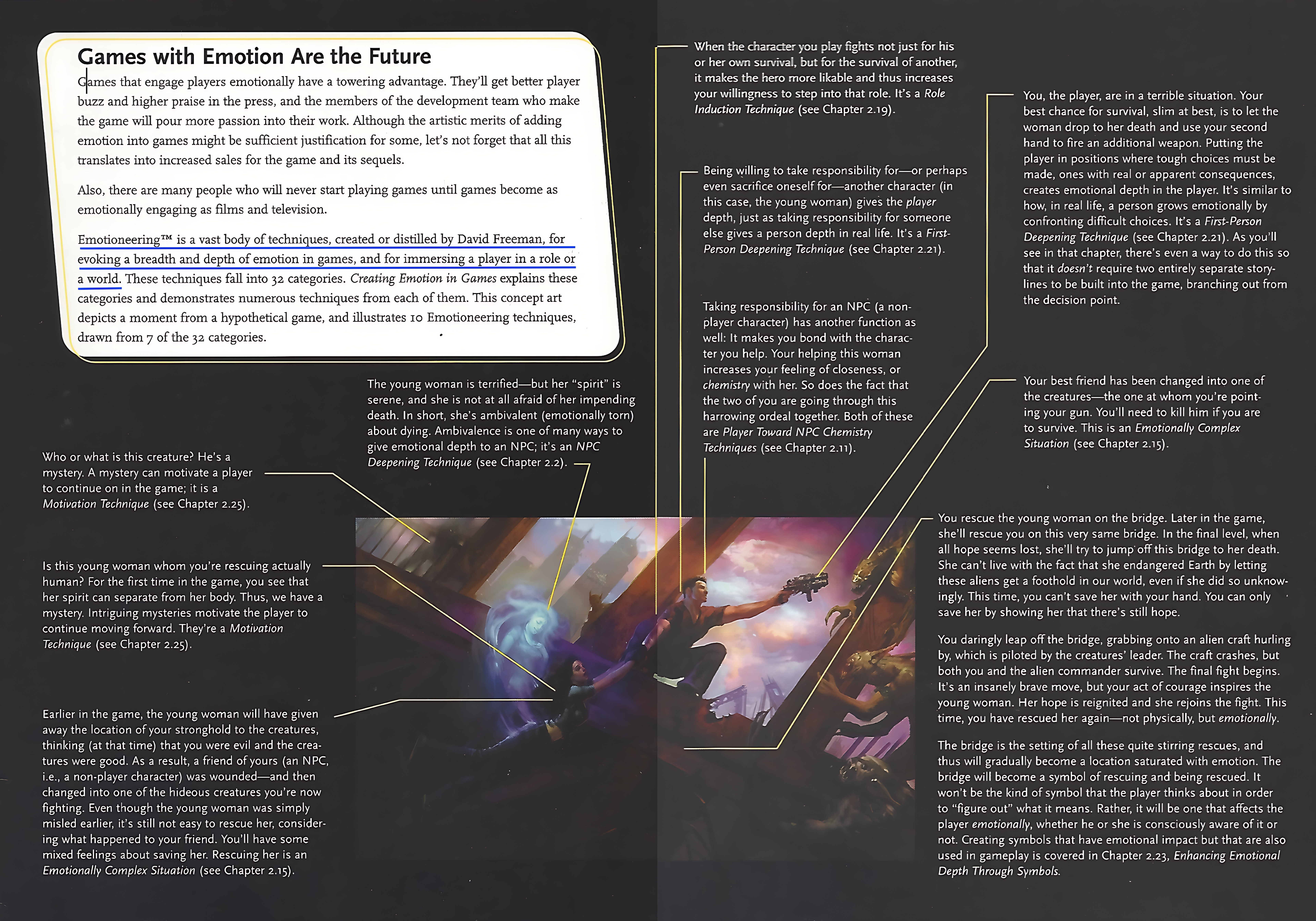
Close-up of the insert:

Emotioneering and AI: StoryTown.ai
A SaaS platform for writers

Just as Emotioneering was transformative for screenwriting and game writing and design, it's transformative for AI as well.
StoryTown.ai, a SaaS platform for fiction writers and screenwriters, combines LLMs (Large Language Models) like ChatGPT and Claude with 1500 highly codified Emotioneering Techniques.
The result: writers can produce never-before seen creative results, all in a curated digital workflow that dramatically boosts productivity.
Because of the Emotioneering Techniques operating “under the hood” of StoryTown.ai, the platform can help a writer brainstorm characters, scenes, twists and stories that are 5 times more surprising, emotionally complex, and moving than what LLMS like ChatGPT, Claude, Gemini and others can do on their own.
The above is an overview of Emotioneering.
For those who'd like a deeper dive, read on…
Teaching Emotioneering Around the World
Prior to joining Fox and Disney, David taught Emotioneering to film studios, networks, production companies and writers around the world –– and of course across the United States as well.
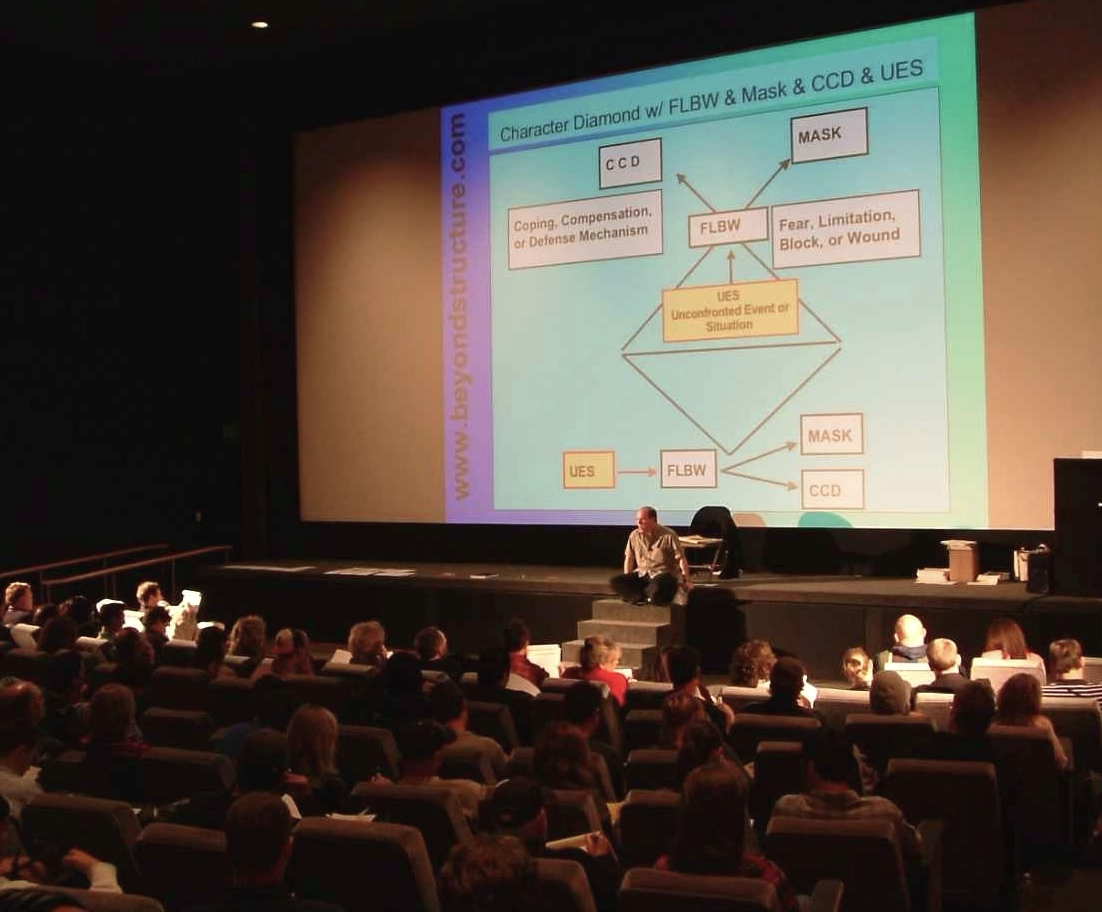
David Teaching Emotioneering Techniques
At Universal Pictures
Here's David teaching Emotioneering at:
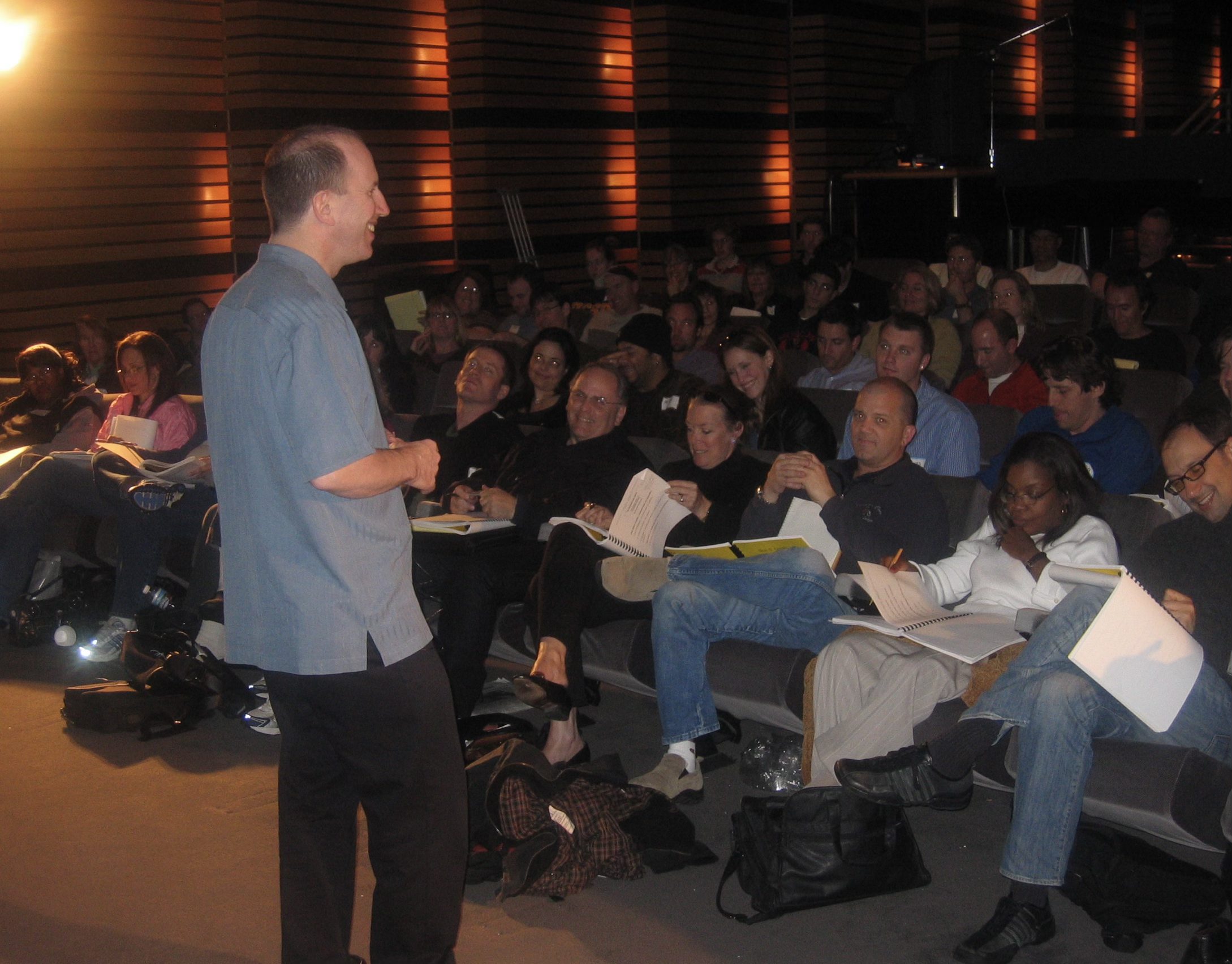
London and
the BBC
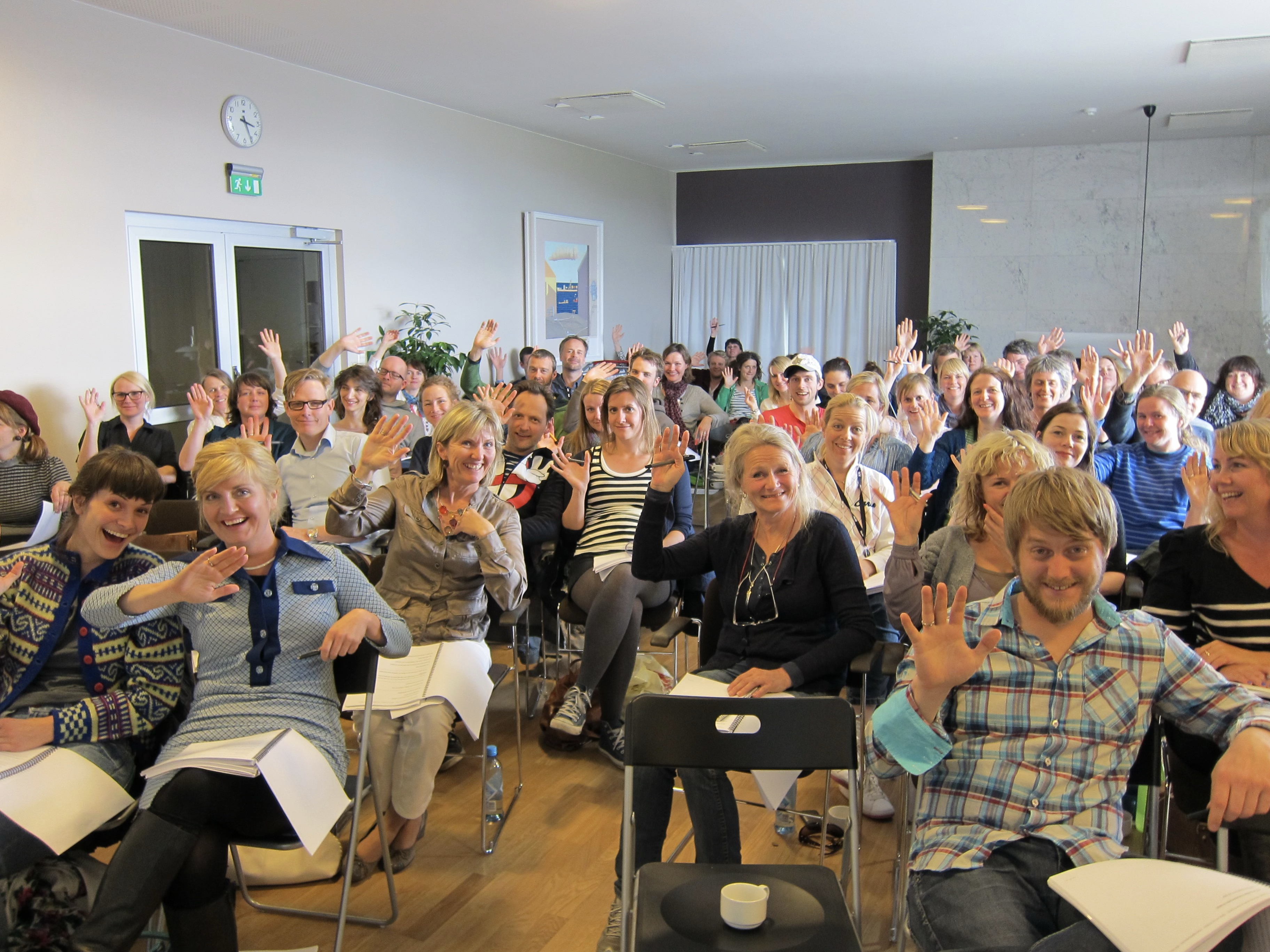
The National Broadcasting Network
of Norway (The NRK)
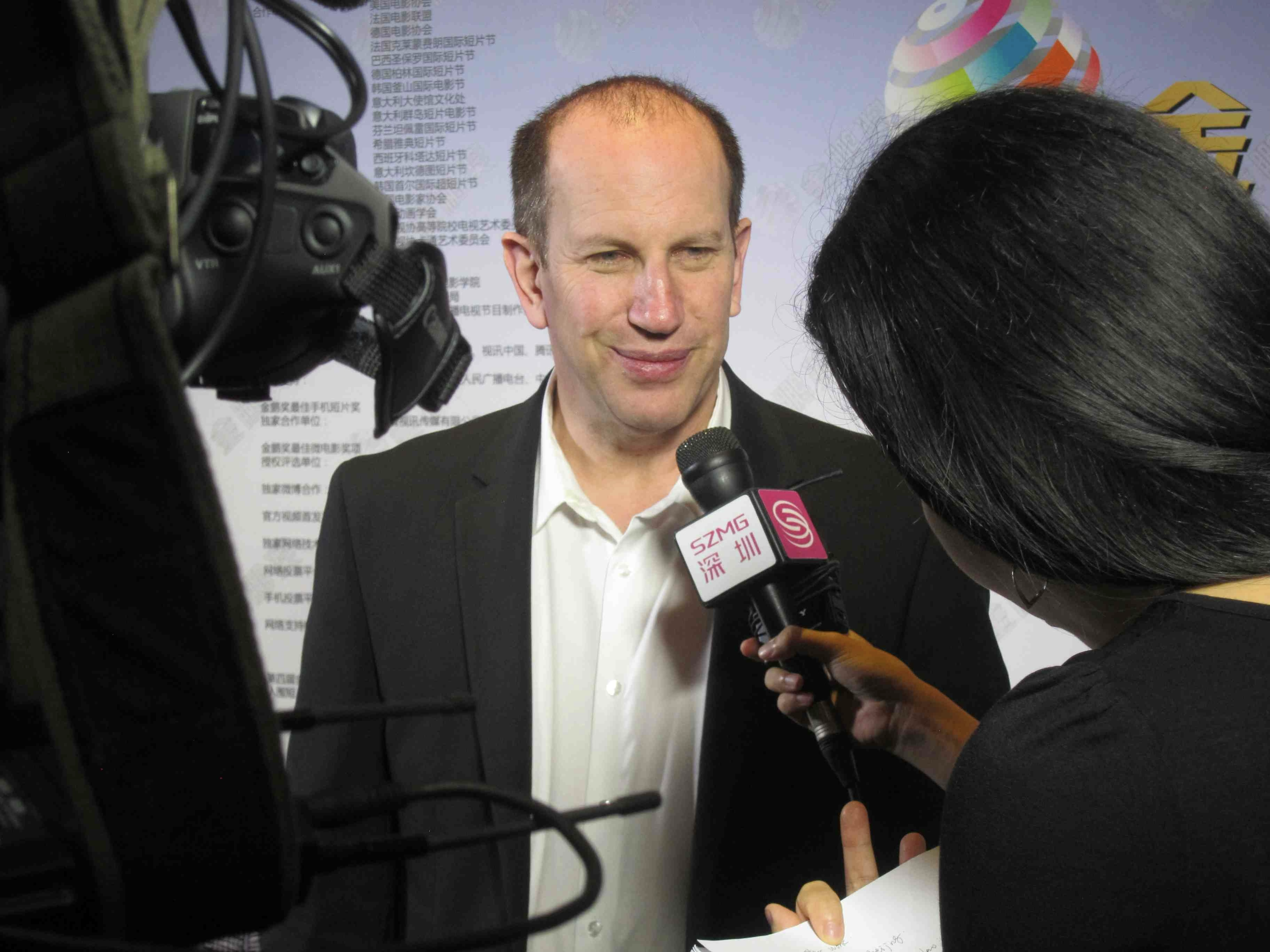
China Film Group
Corporation in Shenzhen
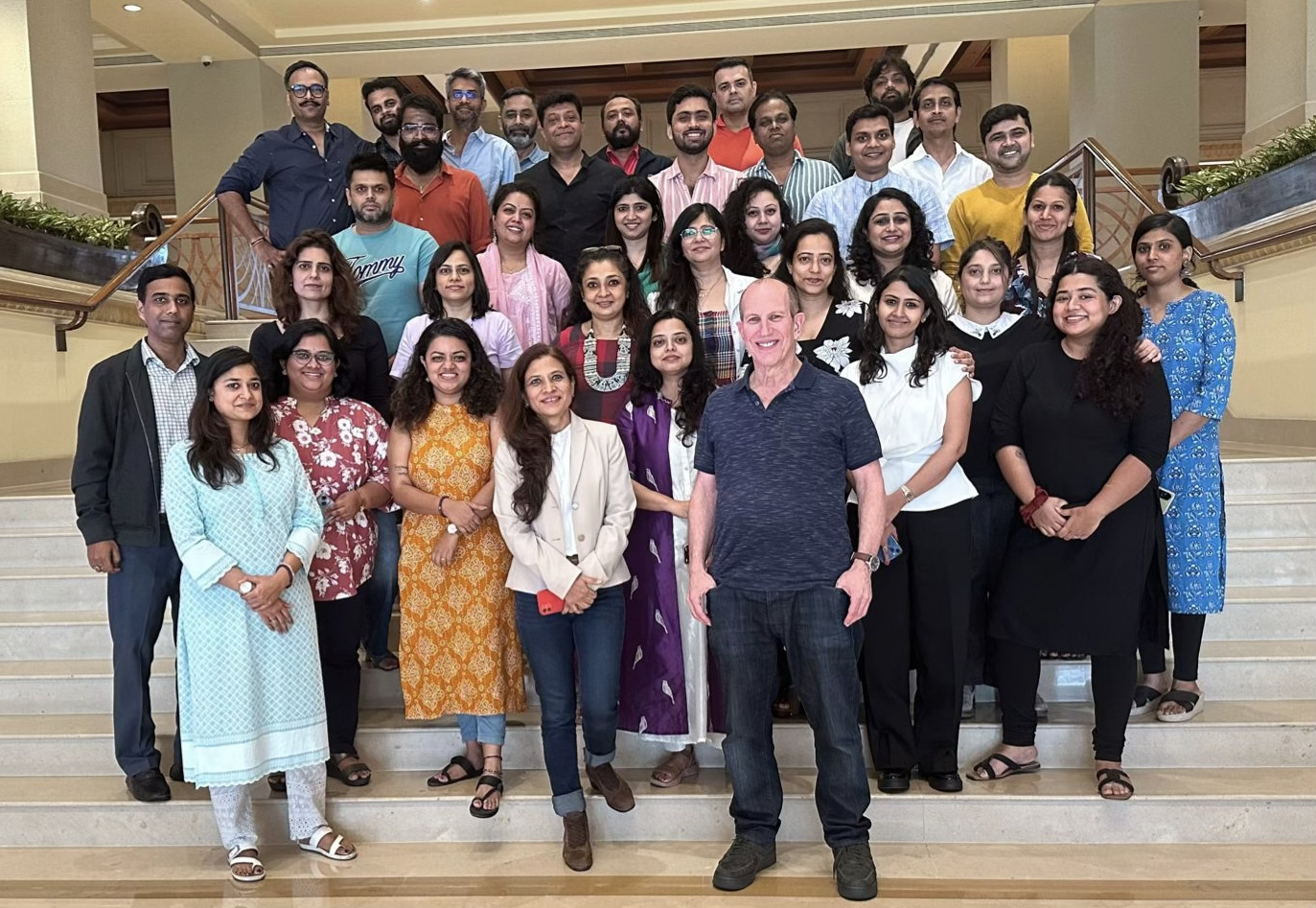
Sony Entertainment Television
in Mumbai


During the Pandemic, David
taught Emotioneering Techniques
to Netflix content executives
across Europe

The Motion Picture Association of
America (MPAA) made David their
official screenwriting instructor in
the conferences they held across
China and Korea
David has also taught Emotioneering at:
Pixar (Emeryville) • Disney (Burbank) • Disney (London) • China Central Television (Beijing) • Aardman Animation (Bristol) • Studio 100 (Brussels) • Zee TV (Mumbai) • Tianjin Film Studio (Tianjin) • The Australian Film Commission (Sydney)
There were additional engagements in London (8 times) • Beijing (11 times) • Busan (Korea) • Paris • Cape Town • Stockholm • Johannesburg • Singapore • Copenhagen • Seoul • Kuala Lumpur • Leipzig • etc.
Teaching Emotioneering at Game Conferences and to Game Publishers and Studios
David's book, “Creating Emotion in Games,” made him an in-demand speaker and teacher (and writer) within the game industry.
Twice David gave talks demonstrating Emotioneering Techniques for games at the prestigious GDC (Game developers Conference) in San Francisco.

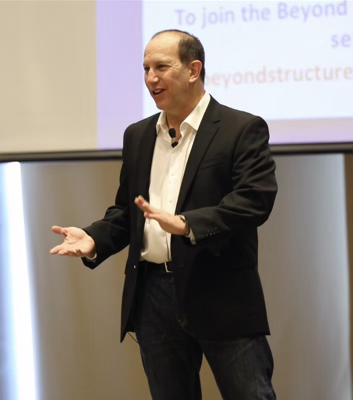

David Teaching Emotioneering
at the GDC
David also spoke about Emotioneering at the D.I.C.E Game Summit, as well as at various other game conferences in Europe including at the GDC Europe in both London and Leipzig.
He was brought in to teach Emotioneering for games at:
- Electronic Arts – Los Angeles
- Electronic Arts – Orlando
- Electronic Arts – Vancouver
- Electronic Arts – Stockholm (DICE)
- Ubisoft – Paris
- Ubisoft – Montreal
- Sony Computer Entertainment – San Diego
- Microsoft Game Studios – Redmond
- Larian Studios – Ghent
- Crytek – Frankfurt




